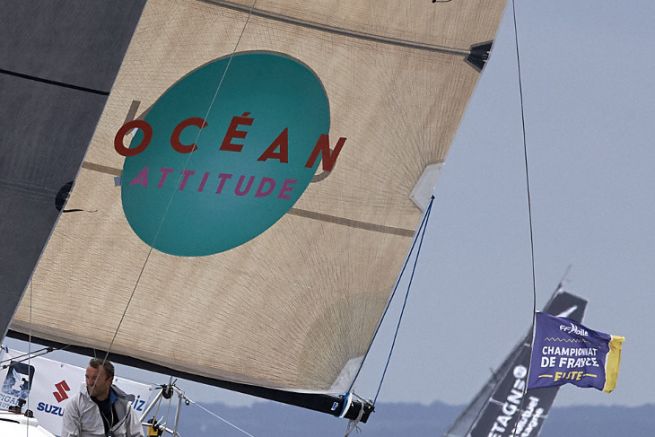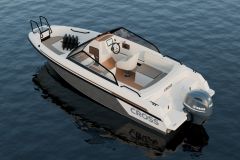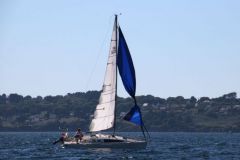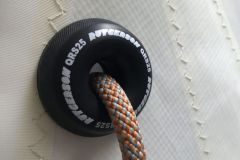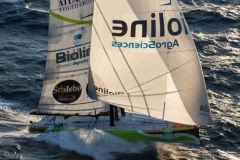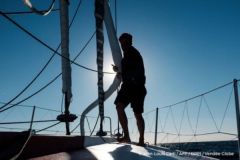A shared reflection for more sustainable sails
The All Purpose sailmaking project for the manufacture of sails incorporating natural fibres is due to start at the end of 2019. "We had this desire and almost at the same time, Adrien Hardy asked us to find out what we could do in this direction for his Figaro 3. The health crisis has turned the plans upside down a bit and there was an important time imperative with the Solitaire du Figaro. That's one of the reasons why we chose to start with flax fibre, which has characteristics close to those of black technora, the aramid we use. Especially in terms of processing" explains Fred Moreau, sales manager of the All Purpose sailmaker
A mainsail made of 35% linen
For Adrien Hardy's Figaro 3, it was finally a mainsail with 35% flax fibres that was manufactured, with CLM, the supplier of the Trilam membranes used by All Purpose, based in Najac, in the Aveyron. To remain at the same weight as traditional membrane sails, black technora was replaced by dyneema. Although the long term shape retention will probably be less, the mass stake was essential for a one-design series. The relatively good knowledge of the material, already used in "hard" composites, was also a positive point.
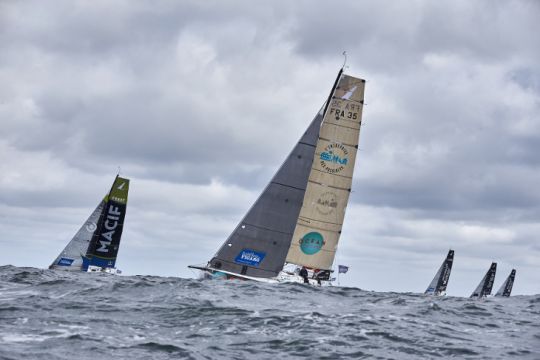
Towards a commercial development for cruising and ocean racing
After a first successful test, All Purpose intends to continue the project in several directions. "We are at the beginning of the process. Technically, we will look in 2 directions. For the cruise, test the increase in the percentage of flax fibers. In ocean racing, test on bigger boats and different sails. We started with a full-batten mainsail, as the battens ensured good sail hold. The next step would be to try it out on a Class40 gennaker, for example, which is more subject to faseying," says Fred Moreau
From an industrial point of view, the first mainsail has made it possible to identify the flax supply chain. "We could see that we didn't need any specific products and that the yarns available on the market suited us," says Fred Moreau. It remains for the sailmaker to continue its technical studies and an economic study for a product whose potential to appeal to yachtsmen and skippers should be high. An interesting step towards a more ecological yachting.
